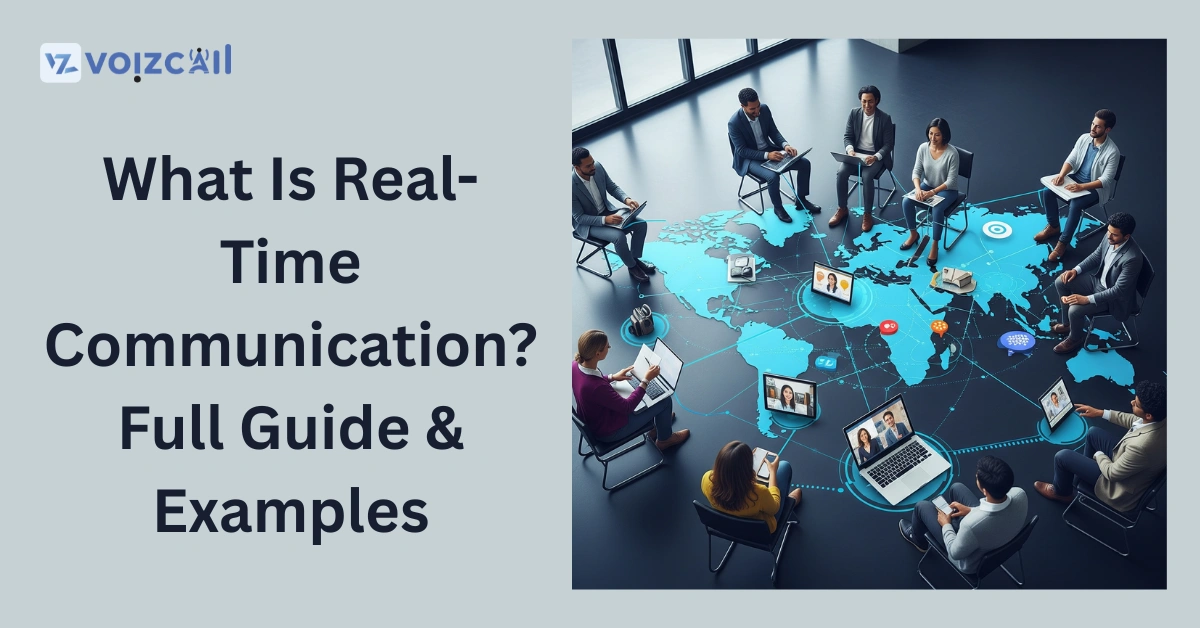


05/Jun/2025
Ever used Zoom, WhatsApp, or Google Meet to chat or call someone? Then you’ve already experienced Real-Time Communication (RTC). But what exactly is RTC in communication? Why is it more crucial now with the fast movements in the digital industry?
Here, we’ll explain what RTC is in networking, show the differences between it and conventional communication and give simple examples of where it is used. Whether you're running a business or just curious, this guide is written in simple language so anyone can understand and enjoy.
What stands for RTC in Communication?
RTC (Real-Time Communication) means any kind of communication that is instantaneous — there is barely any delay. Through the internet, video, voice or text communication in real time is made possible for several people.
There is no need to wait for your messages to load when you have a smartphone.Everything happens live — just like talking in person, but through digital devices.
RTC Meaning in Networking
In networking, RTC refers to the technology and systems that make this instant communication possible. It includes:
Audio and Video Calls (like Zoom, FaceTime, Skype)
Live Chat Messaging (like WhatsApp, Facebook Messenger)
Web Conferencing Tools (like Google Meet, Microsoft Teams)
Live Streaming (on YouTube, Instagram, etc.)
They use internet protocols to exchange data with immediate speed. WebRTC makes it possible for you to do this right in your web browser, eliminating any issues.
RTC vs Traditional Communication
Let’s compare real-time and traditional methods:
|
|
Feature |
RTC (Real-Time) |
Traditional Communication |
|
|
Speed |
Instant |
Delayed (emails, letters) |
||
|
|
Format |
Audio, video, text (live) |
Mostly text or voice (non-live) |
|
|
|
Engagement |
Interactive and dynamic |
One-way or slower response |
|
|
|
Examples |
Zoom call, live chat, video call |
Email, SMS, voicemail |
|
As you can see, RTC vs traditional communication shows a big difference in speed and user experience. In today’s world, instant interaction is often expected—especially for business and customer service.
Call / Email for Sales Inquiry Today
Real-World Examples of RTC
Here are some ways Real-Time Communication is used daily:
Remote Work: Teams hold meetings on Zoom, share screens, and chat live.
Customer Support: Live chatbots or agents solve problems instantly.
Online Education: Students attend virtual classrooms with video and live Q&A.
Social Media: Instagram Live or Facebook Live connects users in real time.
Telemedicine: Doctors and patients communicate over live video calls.
Why Is RTC Important Today?
Real-Time Communication is important, not only a good term.
There is no delay for replies because everything is instant.
Better Collaboration: Teams feel more connected, even remotely.
Improved Customer Experience: Quick support = happy customers.
Cost-Effective: Cuts down on travel, hardware, and delays.
From personal chats to business deals, RTC is transforming the way we communicate.
Conclusion: The Future Is Real-Time
In 2025 and beyond, Real-Time Communication is only going to grow. From live video to instant chat, RTC is at the heart of how people and businesses stay connected in a digital-first world.
Still using old-school methods? It might be time to rethink. Instant is the new standard — and RTC is leading the way.